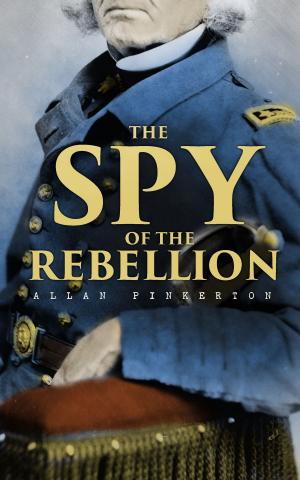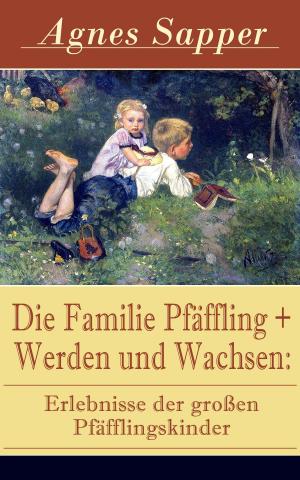Little Nemo - The Complete Comic Strips (1912) by Winsor McCay (Platinum Age Vintage Comics)
Comics & Graphic Novels, Anthologies| Author: | Winsor Mccay | ISBN: | 9788074840081 |
| Publisher: | e-artnow | Publication: | January 29, 2013 |
| Imprint: | e-artnow | Language: | English |
| Author: | Winsor Mccay |
| ISBN: | 9788074840081 |
| Publisher: | e-artnow |
| Publication: | January 29, 2013 |
| Imprint: | e-artnow |
| Language: | English |
This comic ebook presents "Little Nemo - The Complete Comic Strips (1912) by Winsor McCay": 49 full color comic strips in ultra high definition (each page ca. 1700 pixels by 2200 pixels) for your eReader. Little Nemo is the main fictional character in a series of weekly comic strips by Winsor McCay that appeared in the New York Herald and William Randolph Hearst's New York American newspapers respectively from October 15, 1905 – July 23, 1911 and September 3, 1911 – July 26, 1914. The strip was first called "Little Nemo in Slumberland" and then "In the Land of Wonderful Dreams" when it changed papers in 1911.
Although a comic strip, Little Nemo is far from a simple children's fantasy; it is often dark, surreal, threatening, and even violent. The original set-up of the comic revolved around the nightly dreams of a little boy named Nemo (meaning "nobody" in Latin). The purpose of his early dreams was to reach 'Slumberland', the realm of King Morpheus, who wanted him as a playmate for his daughter, Princess Camille. The last panel in each strip was always one of Nemo waking up, usually in or near his bed, and often being scolded (or comforted) by one of the grownups of the household after crying out in his sleep and waking them. In the earliest strips, the dream event that woke him up would always be some mishap or disaster that seemed about to lead to serious injury or death, such as being crushed by giant mushrooms, being turned into a monkey, falling from a bridge being held up by slaves, or gaining 90 years in age. Later on, when Nemo finally did reach Slumberland, he was constantly being woken up by Flip, a character who originally wore a hat that had 'Wake Up' written on it. Flip would go on to be one of the comic's seminal characters. Other notable recurring characters included: Dr. Pill, The Imp, the Candy Kid and Santa Claus as well as the Princess and King Morpheus. Certain episodes of the strip are particularly famous. These include the Night of the Living Houses wherein Nemo and a friend are chased down a city street by a gang of tenement houses on legs; the Walking Bed, in which Nemo and Flip ride over the rooftops on the increasingly long limbs of Nemo's bed; and the Befuddle Hall sequence, wherein Nemo and his friends attempt to find their way out of a funhouse environment of a Beaux-Arts interior turned topsy-turvy. McCay's mastery of perspective, and the extreme elegance of his line work, make his visions graphically wondrous.
This comic ebook presents "Little Nemo - The Complete Comic Strips (1912) by Winsor McCay": 49 full color comic strips in ultra high definition (each page ca. 1700 pixels by 2200 pixels) for your eReader. Little Nemo is the main fictional character in a series of weekly comic strips by Winsor McCay that appeared in the New York Herald and William Randolph Hearst's New York American newspapers respectively from October 15, 1905 – July 23, 1911 and September 3, 1911 – July 26, 1914. The strip was first called "Little Nemo in Slumberland" and then "In the Land of Wonderful Dreams" when it changed papers in 1911.
Although a comic strip, Little Nemo is far from a simple children's fantasy; it is often dark, surreal, threatening, and even violent. The original set-up of the comic revolved around the nightly dreams of a little boy named Nemo (meaning "nobody" in Latin). The purpose of his early dreams was to reach 'Slumberland', the realm of King Morpheus, who wanted him as a playmate for his daughter, Princess Camille. The last panel in each strip was always one of Nemo waking up, usually in or near his bed, and often being scolded (or comforted) by one of the grownups of the household after crying out in his sleep and waking them. In the earliest strips, the dream event that woke him up would always be some mishap or disaster that seemed about to lead to serious injury or death, such as being crushed by giant mushrooms, being turned into a monkey, falling from a bridge being held up by slaves, or gaining 90 years in age. Later on, when Nemo finally did reach Slumberland, he was constantly being woken up by Flip, a character who originally wore a hat that had 'Wake Up' written on it. Flip would go on to be one of the comic's seminal characters. Other notable recurring characters included: Dr. Pill, The Imp, the Candy Kid and Santa Claus as well as the Princess and King Morpheus. Certain episodes of the strip are particularly famous. These include the Night of the Living Houses wherein Nemo and a friend are chased down a city street by a gang of tenement houses on legs; the Walking Bed, in which Nemo and Flip ride over the rooftops on the increasingly long limbs of Nemo's bed; and the Befuddle Hall sequence, wherein Nemo and his friends attempt to find their way out of a funhouse environment of a Beaux-Arts interior turned topsy-turvy. McCay's mastery of perspective, and the extreme elegance of his line work, make his visions graphically wondrous.















